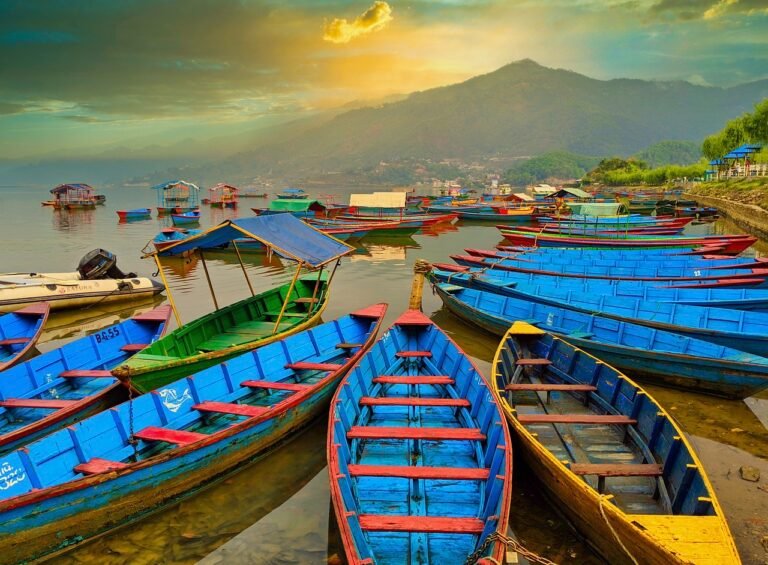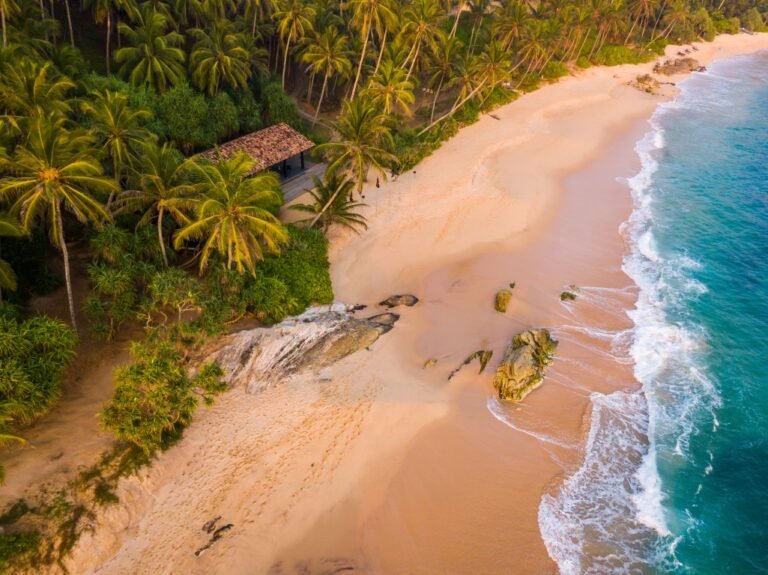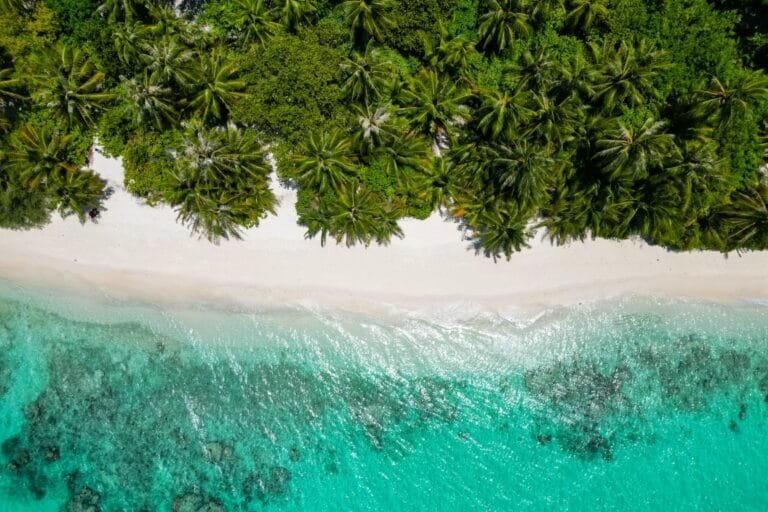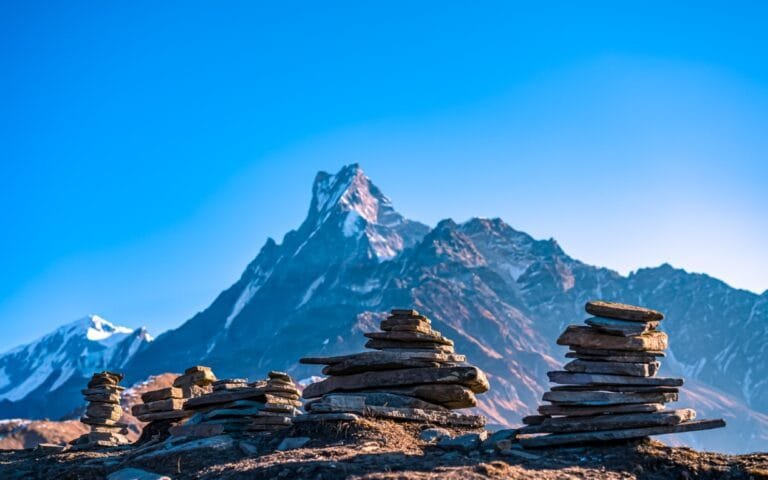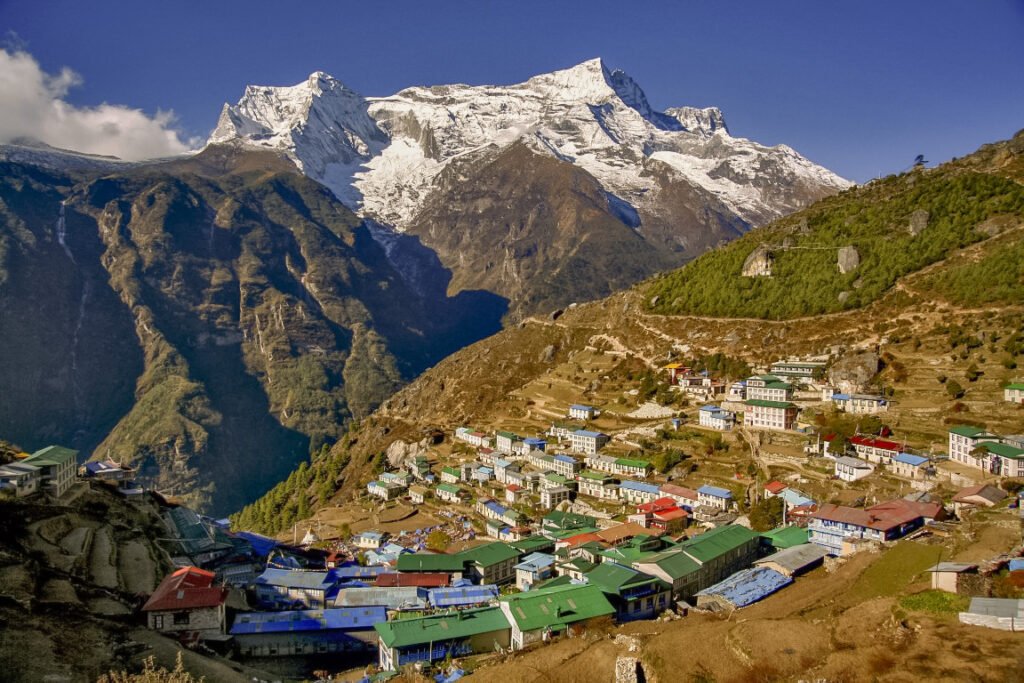
Namche Bazaar
Suppose you are a trekker or willing to trek the most famous Everest Base Camp (EBC) Trek or dream of climbing Mount Everest. In that case, you must have heard the name Namche Bazaar is a key point on the trek to Mount Everest and one of the most important towns in Nepal’s Himalayan trekking culture. Namche Bazaar, often called the “Gateway to Everest”, is located at the height of 3440 meters and shaped like a horseshoe. This lively Sherpa town has become a symbol of adventure, resilience, and the indomitable spirit of the Himalayas. Namche Bazaar is vital in the journey to Everest Base Camp and beyond as both a commercial hub and an acclimatization stop for trekkers.
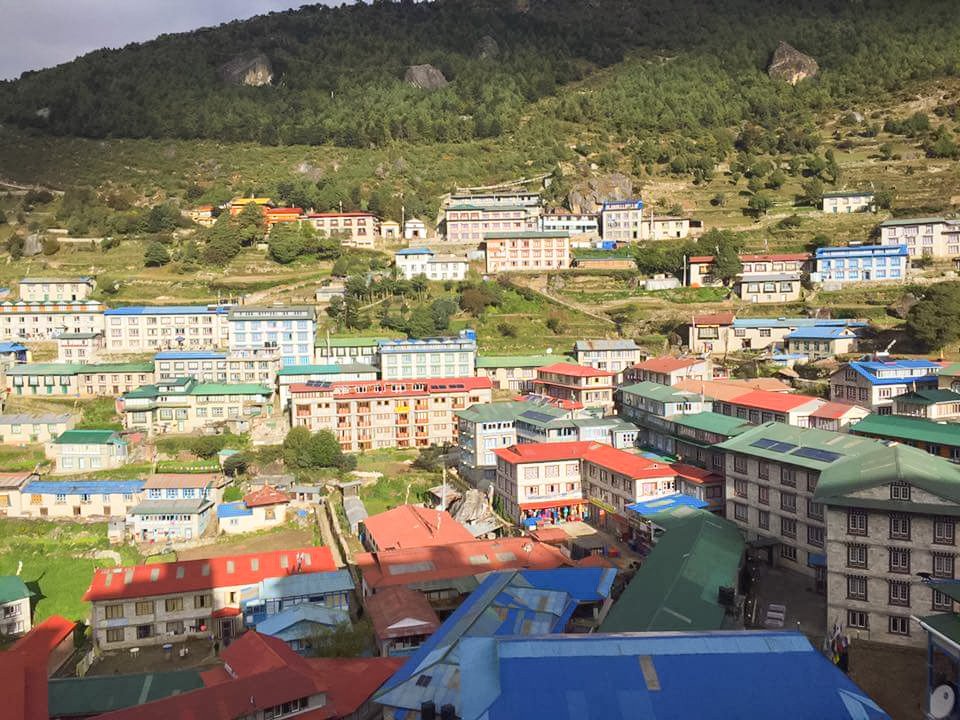
Geographically, Namche Bazaar occupies a unique and strategic position along the trekking routes leading to the Everest region. It sits in a crescent-shaped valley, surrounded by towering peaks, including the mighty Kongde Ri (6,187m), Thamserku (6,608m) and the imposing peaks of the Everest Mountain. Historically, Namche Bazaar served as a trading post between the Sherpas of Nepal and the Tibetans to the north, and it remains a centre of commerce, with goods ranging from food and equipment to traditional Tibetan artefacts. Its location allows it to act as a critical junction for trekkers, mountaineers, and climbers preparing for the challenging ascent to Everest.
For trekkers beyond Namche Bazaar, it is more than just a stop along the way; they must stay here for at least two nights for the most essential step in high-altitude trekking – acclimatization. Acclimatization is when an organism adjusts to a change in its environment, like an oxygen reduction. And above 3000m, it could be critical, so spending more time here will give you optimum acclimatization that will help you to adapt to the higher altitude towards Everest.
Historical Overview
Namche Bazaar’s history is deeply related to the region’s cultural and commercial exchanges, stretching back to the seventeenth century. Initially, the town served as a crucial trading post for the Sherpa people, where Nepali traders from high altitude of Khumbu region and Tibetian traders exchanged goods. Positioned on the ancient trade route, Namche Bazaar acted as a marketplace where goods like salt, grains, and wool were exchanged for Tibetan products such as yak hides, Tibetan herbs, and woollen textiles.
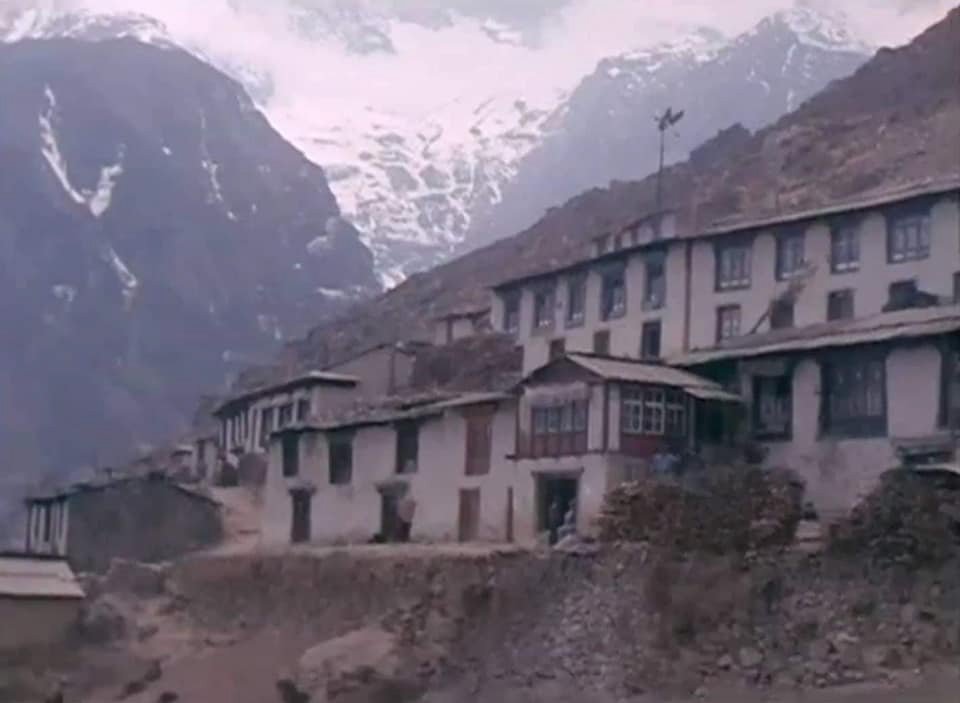
The influence of Tibetan Buddhism began to shape the town’s identity as Namche Bazaar evolved into a spiritual centre. Monasteries, prayer wheels, and chortens (stupas) began to dot the landscape, reflecting the region’s deep-rooted Buddhist traditions. Sherpa culture, closely linked to Tibetan Buddhism, became part of everyday life, with festivals, rituals, and teachings. The Sherpas’ Buddhist faith helped them adapt to the harsh conditions of the Himalayas, and their resilient and hospitable nature became key characteristics of the town.
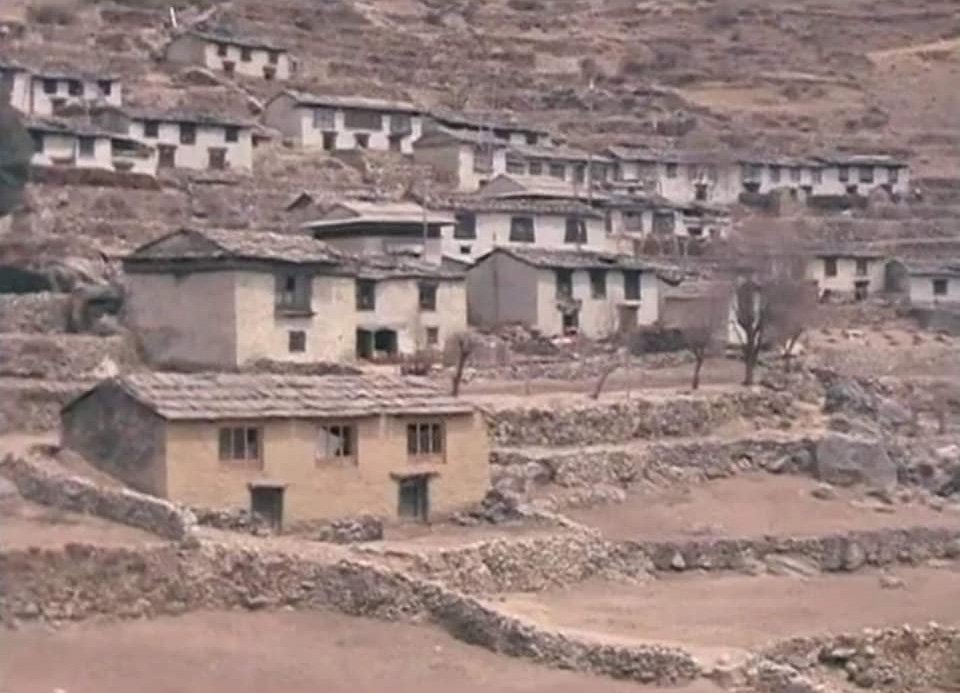
Mountaineering expeditions to Everest began in the early 20th century. The first successful ascent of Mount Everest in 1953, led by Sir Edmund Hillary and Tenzing Norgay, turned the world’s attention to Mount Everest and Namche Bazaar. The town soon transformed from a simple trading post to a vibrant trekking hub, accommodating mountaineers, trekkers, and climbers using Namche Bazaar as their base for acclimatization before heading toward Everest Base Camp.
How to Reach Namche Bazaar
No road links Namche Bazaar directly to the capital Kathmandu. But still, there are several ways to reach Namche Bazaar; each offers you a unique experience. The most common and quickest route is to fly to Lukla, a small mountain town with one of the world’s most dangerous airstrips at 2,860 meters above sea level. Daily flights from Kathmandu to Lukla are operated by small aircraft. From Lukla, it is a two-day hike to Namche Bazaar, passing through vibrant Sherpa villages, lush forests, and traditional suspension bridges. Before heading towards Namche Bazaar, you must spend a night in Phakding or Monjo; this provides enough time for acclimatization.
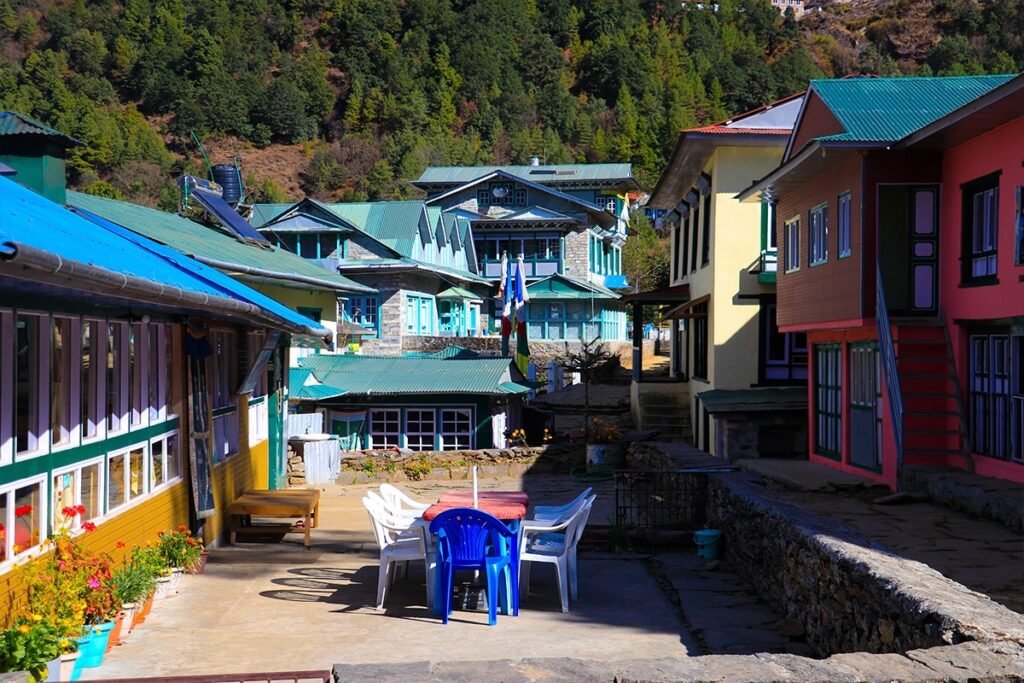
For those seeking a longer, more challenging journey, trekking from Jiri is an alternative route that takes around 7 days to reach Namche Bazaar. Though longer and more physically demanding, this route allows trekkers to acclimatize gradually and experience the diversity of Nepal’s landscapes and cultures.
Another option for reaching Namche is by helicopter. Helicopter services operate from Kathmandu to Namche Bazaar, offering a quicker and more direct route for those short on time or seeking a unique experience.
Things to Do in Namche Bazaar
Wander around the Town
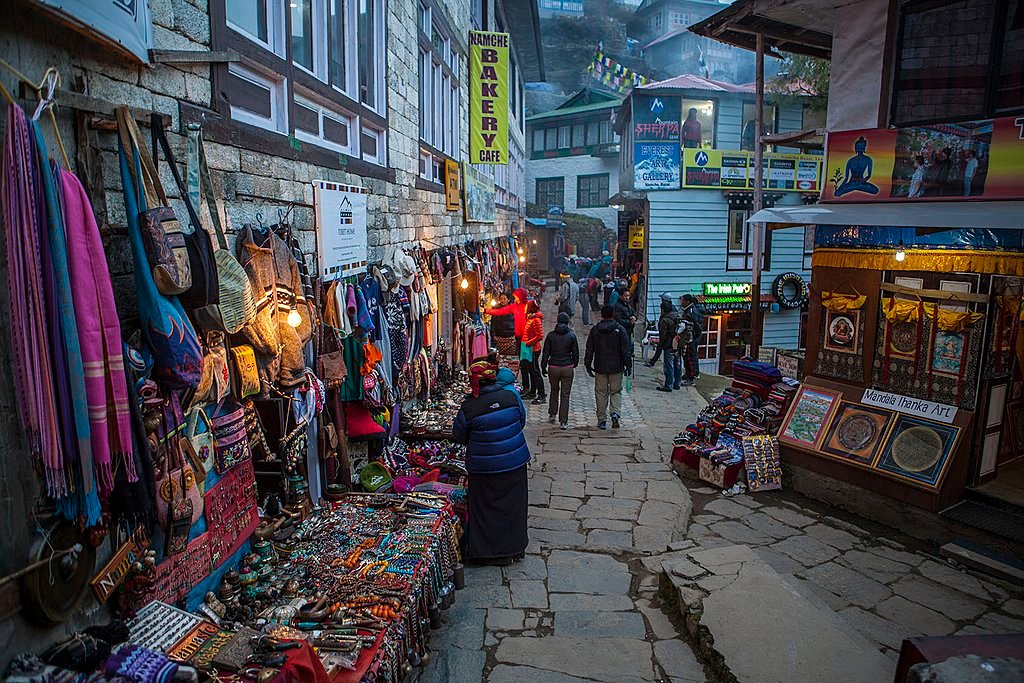
After arriving in Namche Bazaar, the first thing to do is to wander around the town. It is the biggest town in the Khumbu region. This town was developed after the mighty Everest successfully concurred; it has become the central hub in the region. If you walk along the street of Namche Bazaar, you will see several hotels, lodges, restaurants, cafes, bakeries, shops for trekking gear, warm clothes and many more. Trekkers, climbers and travellers are roaming around the town. You will also find locals are busy with their work, and people from other villages come here to sell or buy products. In the playground, some potters or guides are playing volleyball. You can also join them and have some fun.
Explore the Saturday Market
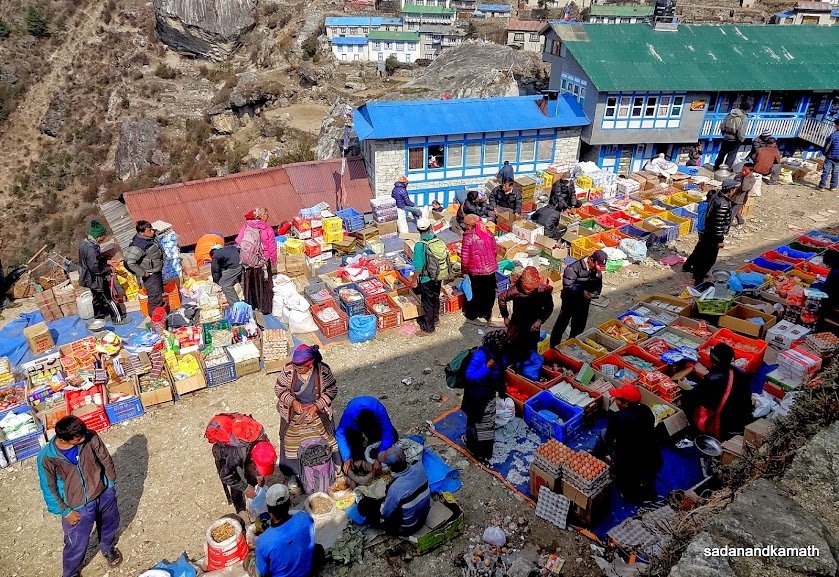
Every Saturday is Market Day at Namche Bazaar, and if you are lucky enough to be in Namche Bazaar on Saturday, make sure to explore the Market. The Market starts early in the morning, and people from different villages nearby come here with their products to sell, and others come here to buy necessary products for their households or lodges. There are shops for trekkers, too; they sell cheap trekking clothes and gear. Historically, Namche Bazaar has been a trade spot for a long time. Within midday, the entire Market vanishes as people have to return to their villages.
Visit the Sherpa Cultural Museum
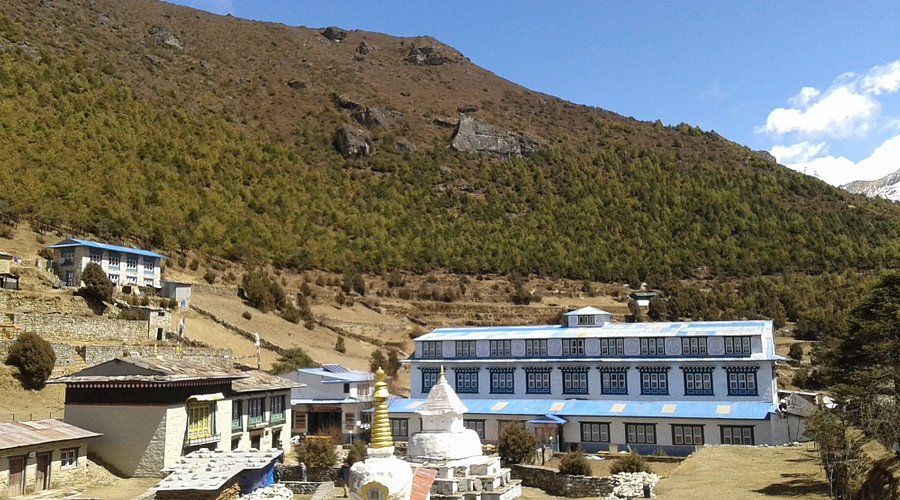
Sherpa Cultural Museum is a small private museum run by a local photographer, Lhakpa Sonam. It is just a 20 minute hike up from Namche Bazaar along the Everest Base Camp trek. The Museum is a tribute to the Sherpa community, known for their mountaineering skills and resilience in the Himalayas. Inside, you can explore a variety of exhibits showcasing Sherpa culture, including traditional clothing, tools, religious artefacts, and ancient photographs.
Visit Sagarmatha National Park Visitor Centre
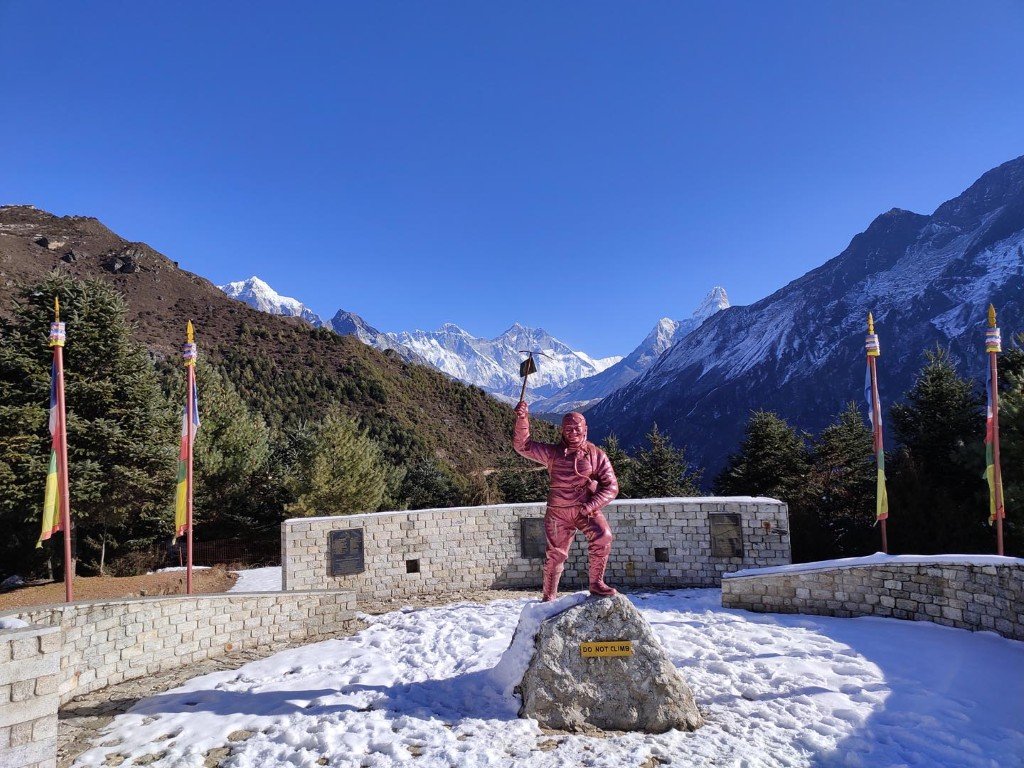
Walking a little further from the Museum and passing the Conservation Memorial Entrance Gate, you will find the Sagarmatha National Park Visitor Centre. This centre is a key information hub for trekkers and visitors exploring the park. If you want to know about this region, then this is the perfect place for you. Through informative displays and exhibits, you can learn about the park’s unique flora and fauna, including endangered species like the snow leopard and red panda.
Have breakfast in Hotel Everest View
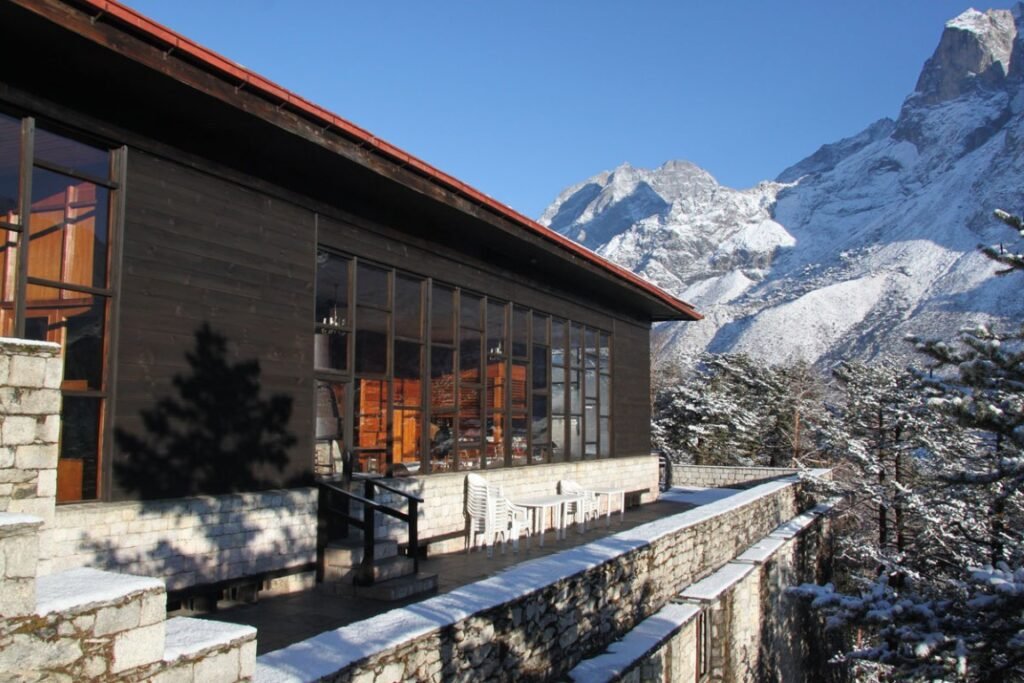
Trekkers towards EBC must stay at Namche Bazaar for one more day to acclimate. For acclimatization, a trek to Hotel Everest View is a perfect one. Hotel Everest View is one of the highest hotels in the world, providing a panoramic view of some of the highest peaks, including Everest. After trekking here in the morning, you can enjoy your breakfast at the hotel’s most popular terrace restaurant with the mighty Everest in front of you.
Visit Shangbouche Hill
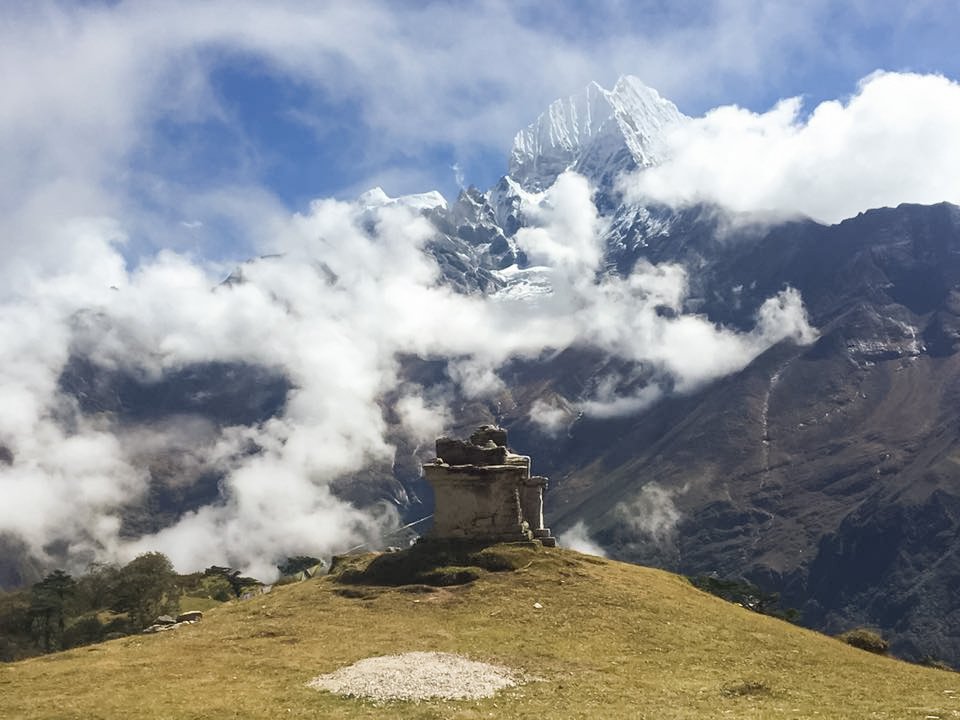
Another acclimatization trek from Namche Bazaar is the trek to Shangbouche Hill. It is 3990 meters high and a couple of hours uphill from Namche Bazaar. Though the hike is challenging but worthwhile, when you reach the top, you will have a stunning view of the surrounding snow caps, including Lhotse, Ama Dablam, Thamserku, Konde Ri, Khumbi La and the mighty Mount Everest.
Visit nearby Khumjung village
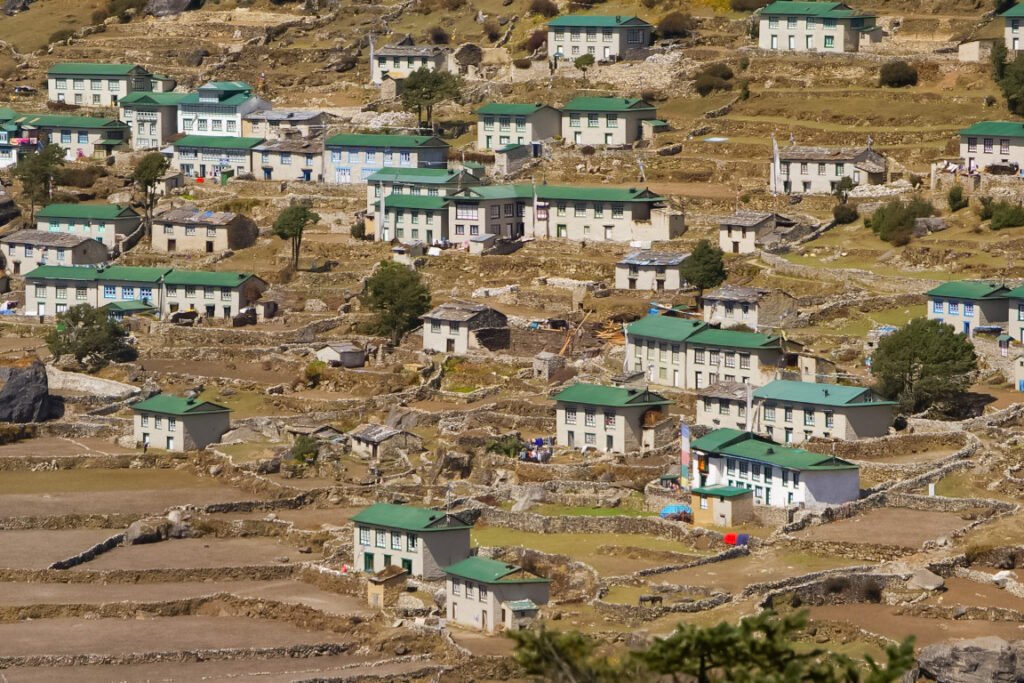
A few hours’ hike from Namche Bazaar, below the sacred mountain Khumbi La, Khumjung village is located. Other villages on the EBC route mainly depended on tourism, but Khumjung village is isolated from the trek and entirely dependent on traditional farming, which makes it unique. Khumjung Monastery, a 500-year-old Buddhist Ghompa, is situated in the village. A Yeti Scalp is securely kept in a glass box; you can visit the monastery and observe it.
Climb uphill to enjoy the Sunrise Over Namche Bazaar
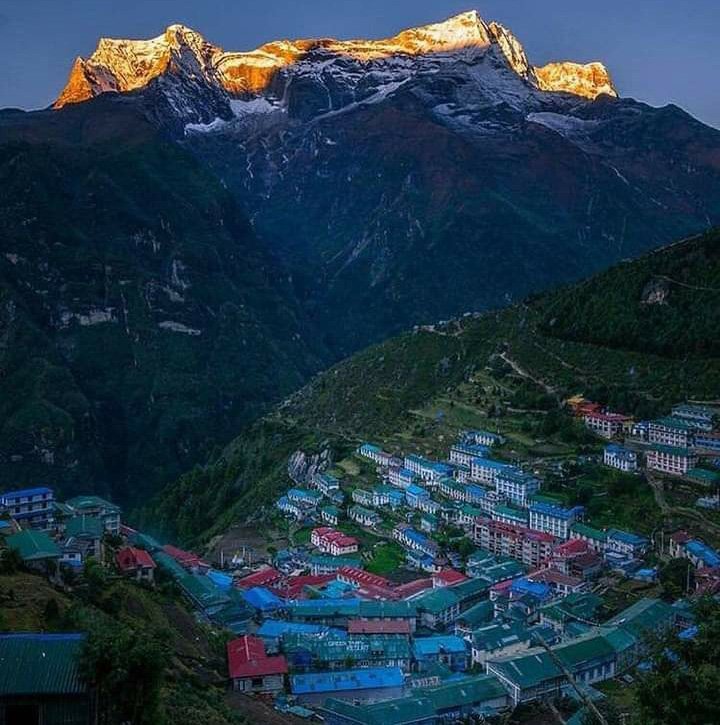
It is so beautiful at dawn when the first ray illuminates the surrounding peaks, so get out of bed early in the morning, grab a flask of coffee, climb uphill and have this incredible experience. But make sure to check the weather for the following day, whether it will be a clear sky or cloudy; otherwise, all your efforts will be in vain.
Visit Namche Monastery
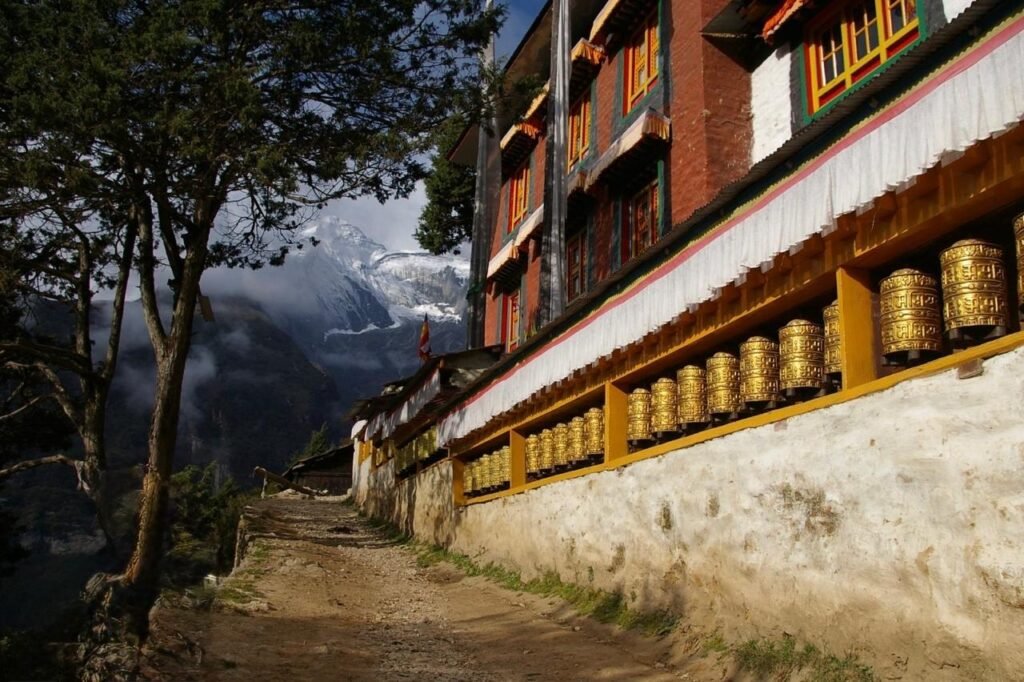
The Monastery in Namche Bazaar, also known as Namche Gompa, is a spiritual place in Namche Bazaar. It’s a small Tibetan Buddhist Monastery at the top of the town. This monastery arranges many festivals and ceremonies throughout the year.
Chill in an Irish Pub
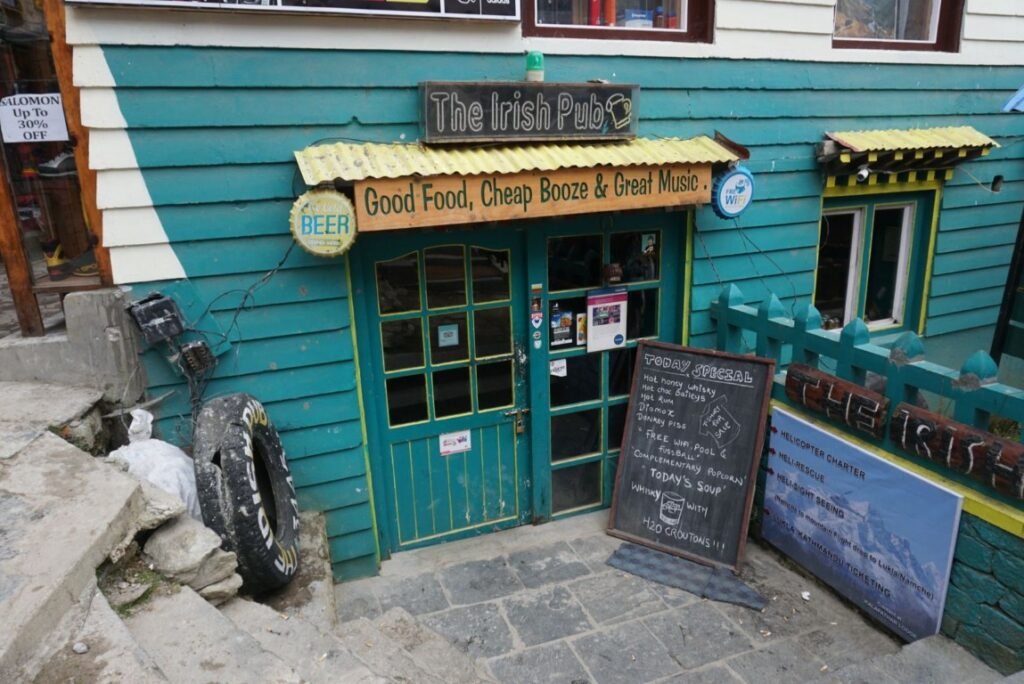
The Irish Pub in Namche Bazaar is another attraction for tourists. It is the highest Irish Pub in the world, and its ambience has both local and western feel. The manager and staff are very welcoming. A sign above the Pub’s door proclaims,” There are no strangers here, only friends who haven’t met”. It is a great place to hang out with drinks and rock music, but I suggest hanging out here on the way back to your trek, as alcohol can worsen altitude sickness.
Trekking Around Namche Bazaar
Namche Bazaar, the gateway to the Everest region in Nepal, offers a variety of trekking routes that cater to all levels of trekkers. Here are some notable trek routes from Namche Bazaar:
Everest Base Camp Trek
Duration: 12-14 days (round trip from Lukla)
Highlights:
- Scenic views of Everest, Lhotse, Nuptse, and Ama Dablam.
- Stops at Tengboche Monastery and Gorak Shep.
- Trek to Kala Patthar for a sunrise view of Everest.
- Visit Everest Base Camp (5,364m).
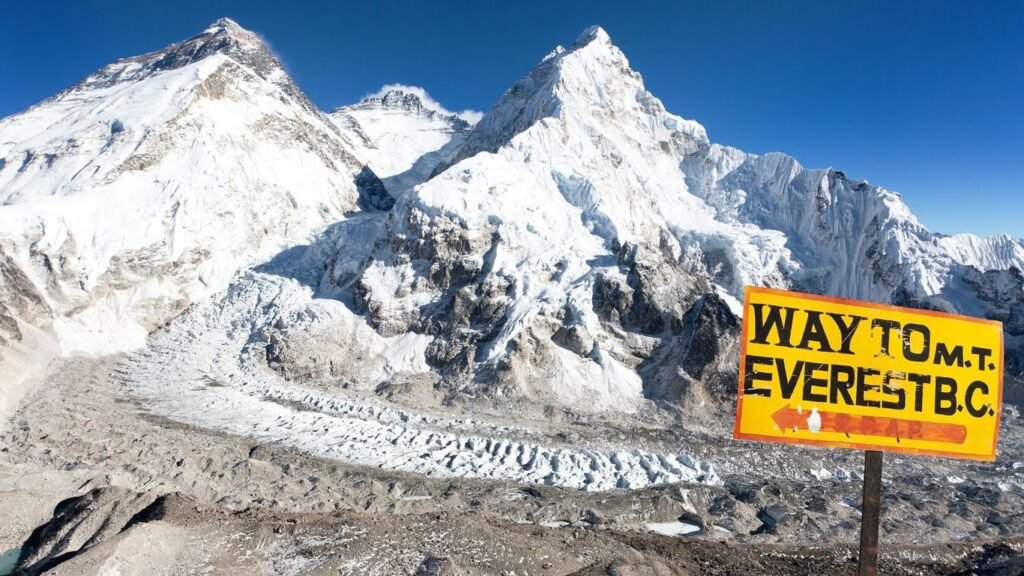
The Everest Base Camp (EBC) trek from Namche Bazaar is a breathtaking journey into the heart of the Himalayas. From Namche Bazaar, the trail ascends through rugged landscapes, charming villages, and dense rhododendron forests. You will visit iconic stops like Tengboche Monastery and Dingboche while acclimatizing to the high altitude. After reaching Everest Base Camp (5,364 meters), you will feel a surreal sense of achievement, surrounded by towering peaks. A sunrise hike to Kala Patthar (5,545 meters) provides unforgettable views of Everest. This trek combines natural beauty, cultural richness, and adventure, making it a dream destination for enthusiasts.
Gokyo Lakes and Gokyo Ri Trek
Duration: 10-14 days
Highlights:
- Stunning turquoise glacial lakes.
- Climb Gokyo Ri (5,357m) for panoramic views.
- It is less crowded than the Everest Base Camp route.
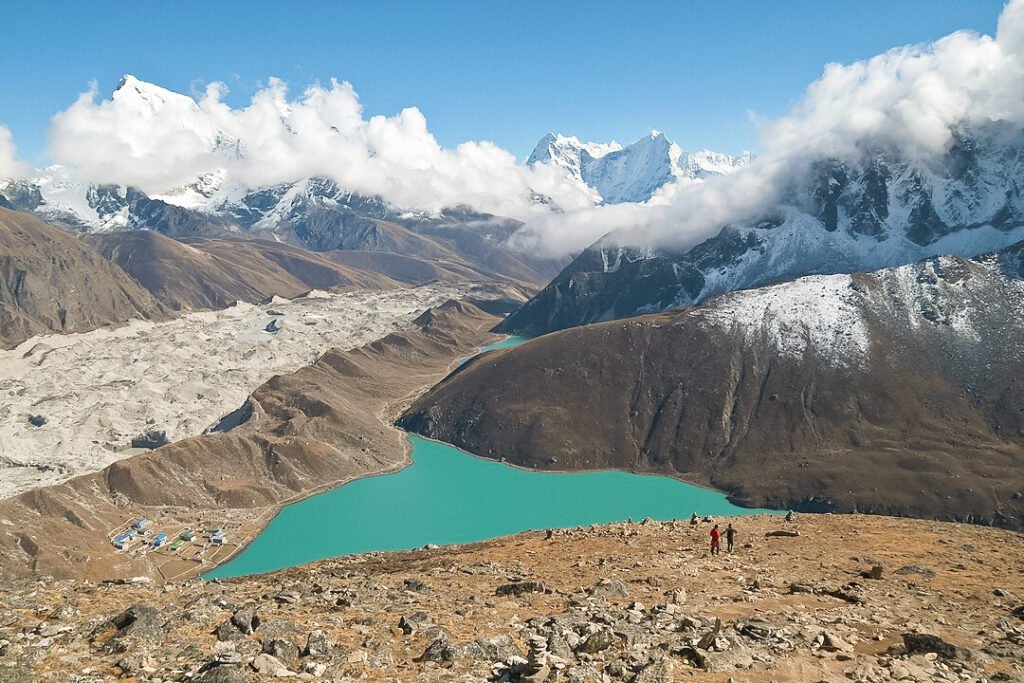
The Gokyo Lakes and Gokyo Ri trek from Namche Bazaar is a stunning journey through the serene landscapes of the Everest region. Starting in Namche Bazaar, the trail meanders through Sherpa villages, lush valleys, and rugged terrain, leading to the breathtaking Gokyo Lakes, a series of turquoise glacial lakes set against a backdrop of towering peaks. The highlight is the ascent to Gokyo Ri (5,357 meters), offering panoramic views of Everest, Cho Oyu, Lhotse, and Makalu. This trek is less crowded than the Everest Base Camp route, providing a tranquil experience rich in natural beauty and cultural encounters with the local Sherpa community.
Three Passes Trek
Duration: 18-20 days
Highlights:
- Cross three high mountain passes: Renjo La (5,360m), Cho La (5,420m), and Kongma La (5,535m).
- Access to Everest Base Camp and Gokyo Lakes.
- Challenging and adventurous.
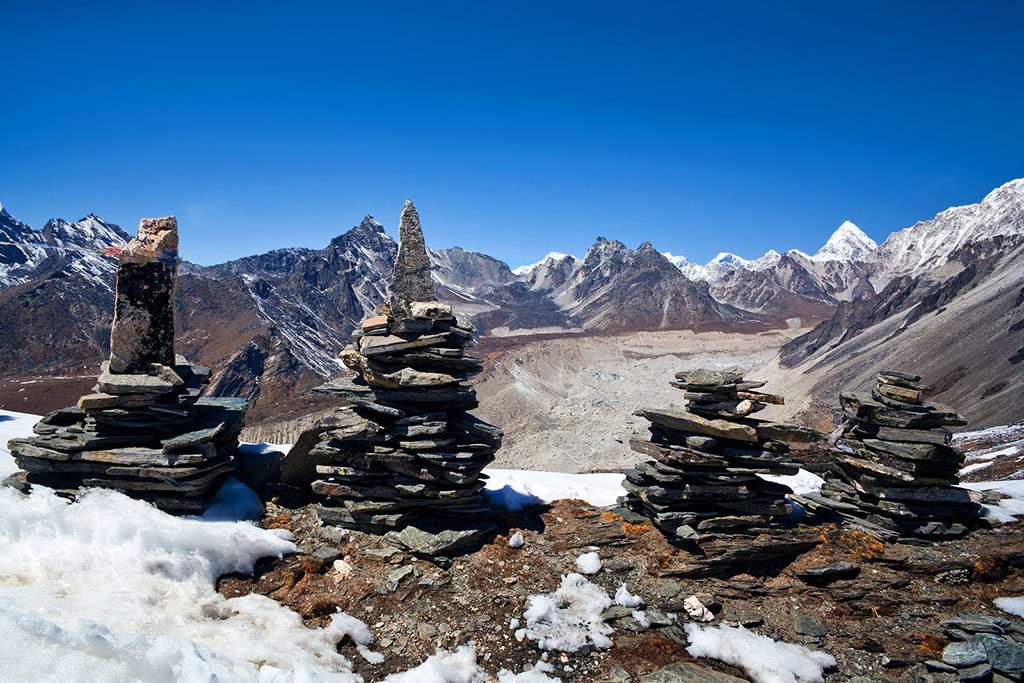
The Three Passes Trek from Namche Bazaar is an adventurous and challenging journey that explores the best of the Everest region. This trek takes you through three high-altitude passes: Kongma La (5,535m), Cho La (5,420m), and Renjo La (5,360m), offering spectacular panoramic views of Everest, Lhotse, Makalu, and Cho Oyu. The route also includes visits to iconic destinations like Everest Base Camp, Kala Patthar, and the stunning Gokyo Lakes. Trekkers pass through diverse landscapes, from lush valleys to rugged alpine terrain, and experience Sherpa culture in remote villages. This trek is a perfect choice for seasoned trekkers seeking adventure and variety.
Everest View Trek
Duration: 2-3days
Highlights:
- Short trek for a view of Everest and surrounding peaks.
- Visit Tengboche Monastery and Khumjung Village.
- It is ideal for beginners or those with limited time.
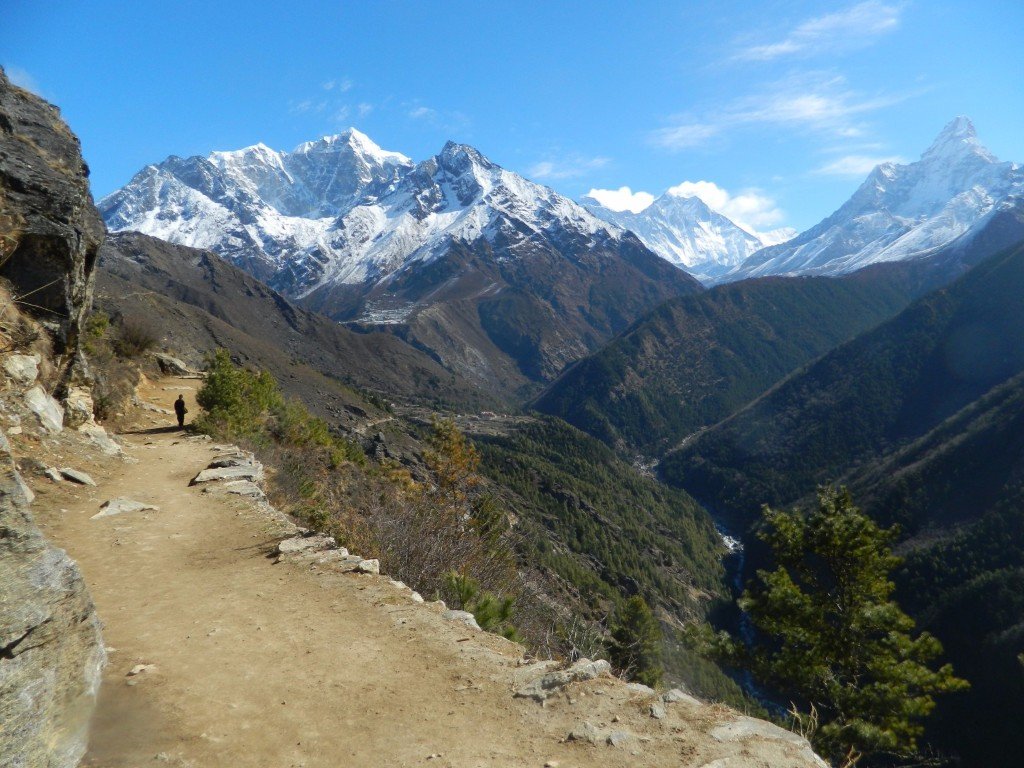
The Everest View Trek from Namche Bazaar is a short yet rewarding journey, ideal for those seeking a taste of the Everest region’s beauty and culture. Starting in Namche Bazaar, the trail leads to picturesque viewpoints offering stunning panoramas of Everest, Lhotse, Ama Dablam, and Thamserku. Trekkers visit traditional Sherpa villages like Khumjung and Kunde, where they can explore monasteries and interact with the local community. A highlight is the stop at the Everest View Hotel, one of the highest-altitude hotels, for breathtaking vistas over tea. This trek is perfect for beginners or those with limited time, providing unforgettable Himalayan scenery without intense altitude challenges.
Ama Dablam Base Camp Trek
Duration: 8-10 days
Highlights:
- Stunning close-up views of Ama Dablam (6,812m).
- Explore Pangboche Monastery.
- Moderate difficulty and a quieter alternative to Everest Base Camp.
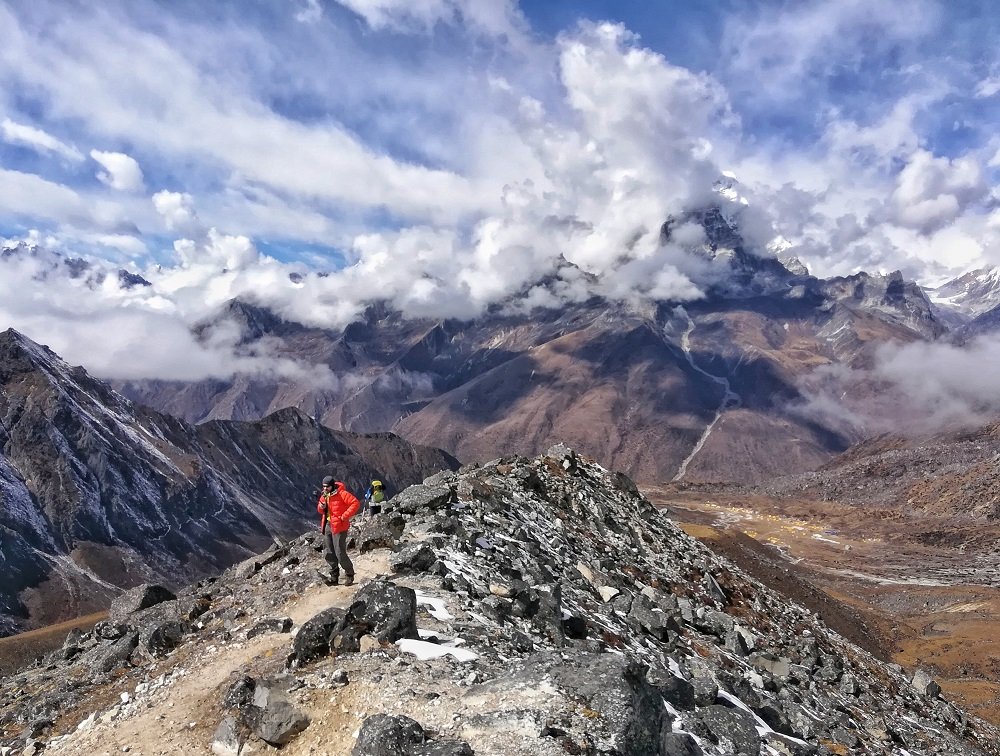
The Ama Dablam Base Camp trek from Namche Bazaar offers an extraordinary journey to the base of one of the Himalayas’ most iconic peaks. Departing from the vibrant Sherpa town of Namche Bazaar, the trail passes through pine forests, suspension bridges, and traditional villages like Tengboche and Pangboche, home to ancient monasteries. The trek leads to the base camp (4,570m), set amidst dramatic alpine scenery with awe-inspiring views of Ama Dablam’s soaring, pyramid-like summit. This moderately challenging trek provides a quieter alternative to the Everest Base Camp route, allowing trekkers to experience the Khumbu region’s natural beauty and cultural richness in a more serene setting.
Renjo-La Pass Trek
Duration: 12-14 days
Highlights:
- Cross Renjo La Pass (5,360m).
- Connects Namche Bazaar with the Gokyo region.
- Spectacular views of Everest and Makalu.
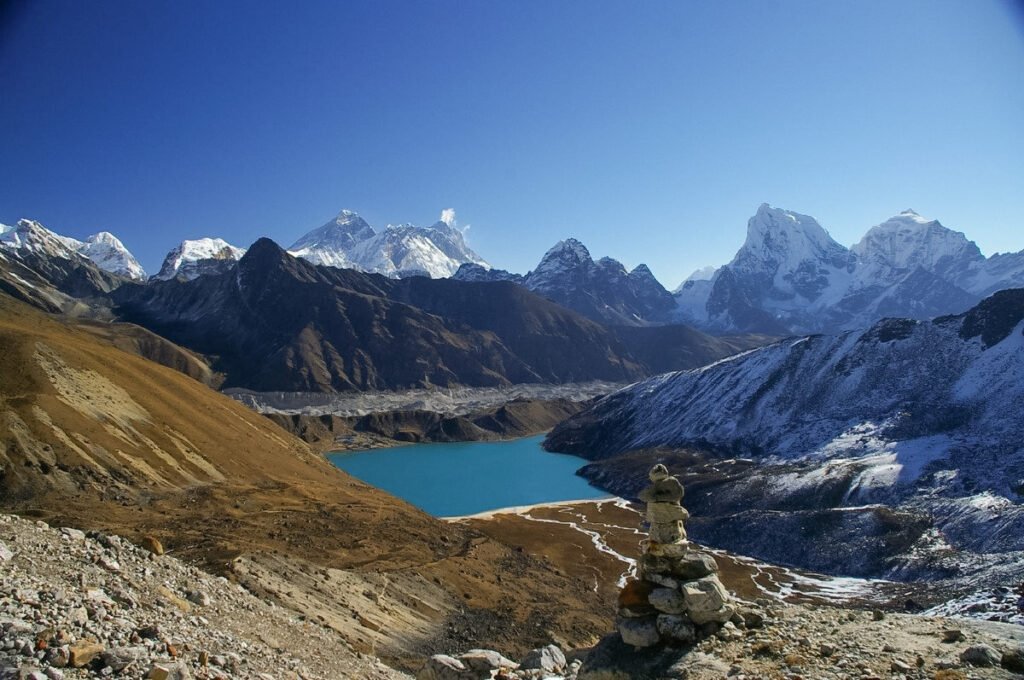
The Renjo La Pass trek from Namche Bazaar is a captivating adventure through some of the Everest region’s most pristine landscapes. The trail ascends gradually through picturesque Sherpa villages and lush valleys, leading to the stunning Gokyo Lakes. The highlight of the trek is crossing Renjo La Pass (5,360m), a challenging yet rewarding feat that offers unparalleled panoramic views of Everest, Lhotse, Makalu, and the surrounding Himalayan giants. The descent brings you back to Namche Bazaar via quieter, less-trodden paths, making this trek an excellent choice for those seeking solitude and breathtaking scenery combined with cultural encounters in the Khumbu region.
Thame Valley Trek
Duration: 4-6 days
Highlights:
- Off-the-beaten-path experience.
- Visit Thame Monastery and learn about Sherpa culture.
- Peaceful trails and beautiful landscapes.
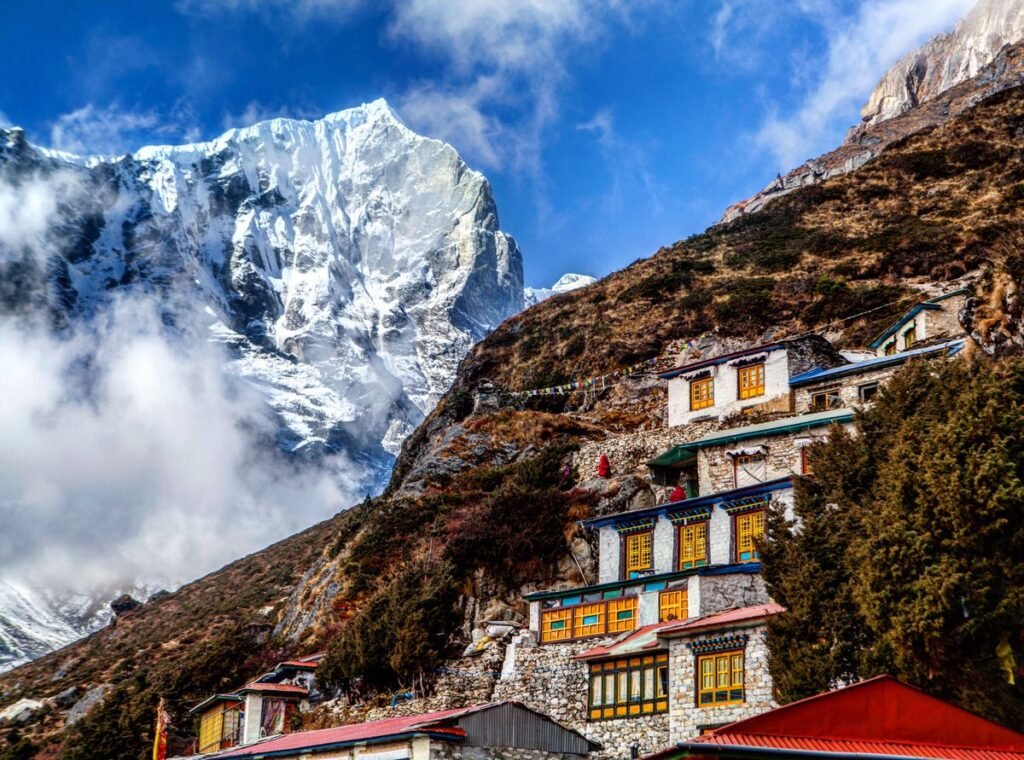
The Thame Valley trek from Namche Bazaar is a serene and culturally rich journey into the quieter parts of the Everest region. This trail leads trekkers through lush forests and traditional Sherpa villages, culminating in the picturesque village of Thame, home to one of the oldest monasteries in the region. The Thame Monastery, perched on a hill, offers a glimpse into Tibetan Buddhist traditions and breathtaking views of surrounding peaks like Kongde and Teng Kangpoche. This trek is less crowded than other Everest routes, making it ideal for those seeking solitude, natural beauty, and a deep connection with the Sherpa heritage and lifestyle.
Hotel and Lodges in Namche Bazaar
Namche Bazaar is a small town where mainly trekkers use to seek accommodations. But you can get good quality accommodation in Namche Bazaar based on your budget. All locally owned teahouses to luxury hotels are available here; it’s up to you where you want to lay your back. Small and midsize teahouses offer basic facilities with twin shared rooms, a common washroom, and a device charging facility in the common area. Some teahouses offer attached washroom accommodation, but it will cost you more. On the other hand, luxury hotels have almost all luxury facilities like a double bed with room heater, attached washroom, running hot water, charging facility within the room, free Wi-Fi, etc. However, twin-sharing rooms are the most common accommodation in Namche Bazaar.
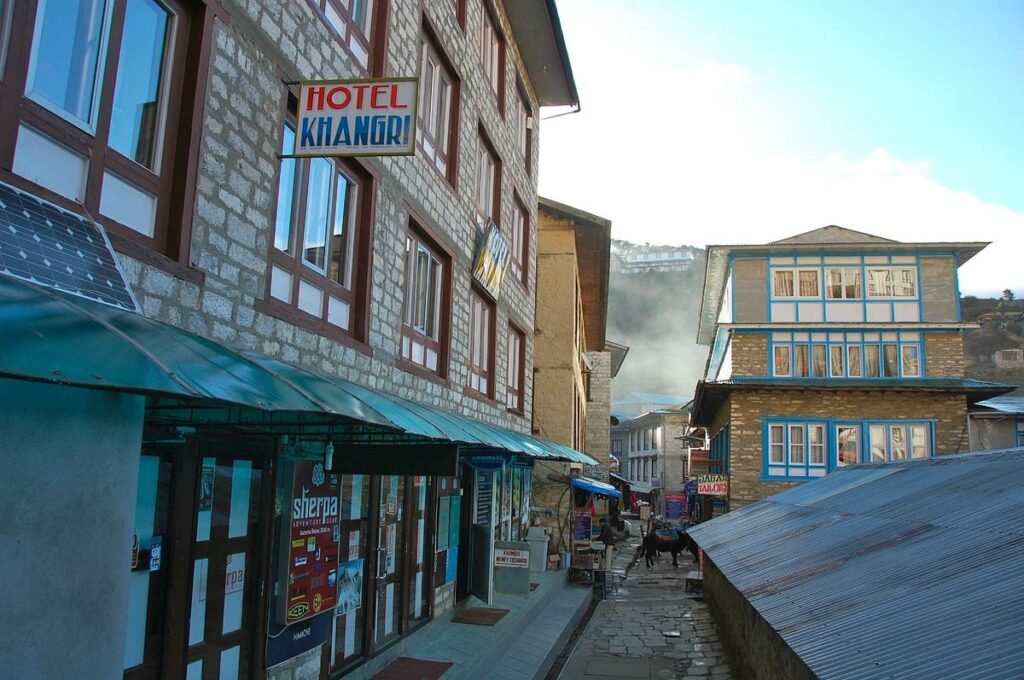
The most popular hotels in Namche Bazaar are:
- Mountain Lodges
- The Bodhi Namche
- Hotel Namche
- Hotel Khangri
- Panorama Lodge
- Hotel Namche
- And the famous one of the highest hotels in the world, Hotel Everest View.
There are also a number of small and midsize lodges available in Namche Bazaar. Rooms are available even in peak seasons. But keep in mind that in winter, most of the properties are closed.
The best Time to Visit Namche Bazaar
Namche Bazaar is accessible any time of the year; due to fewer trekkers in Summer and Winter, it looks empty, and most shops are closed. But Namche Bazaar always stays open as it is this region’s business hub. Autumn and Spring are the best seasons to visit Namche Bazaar.
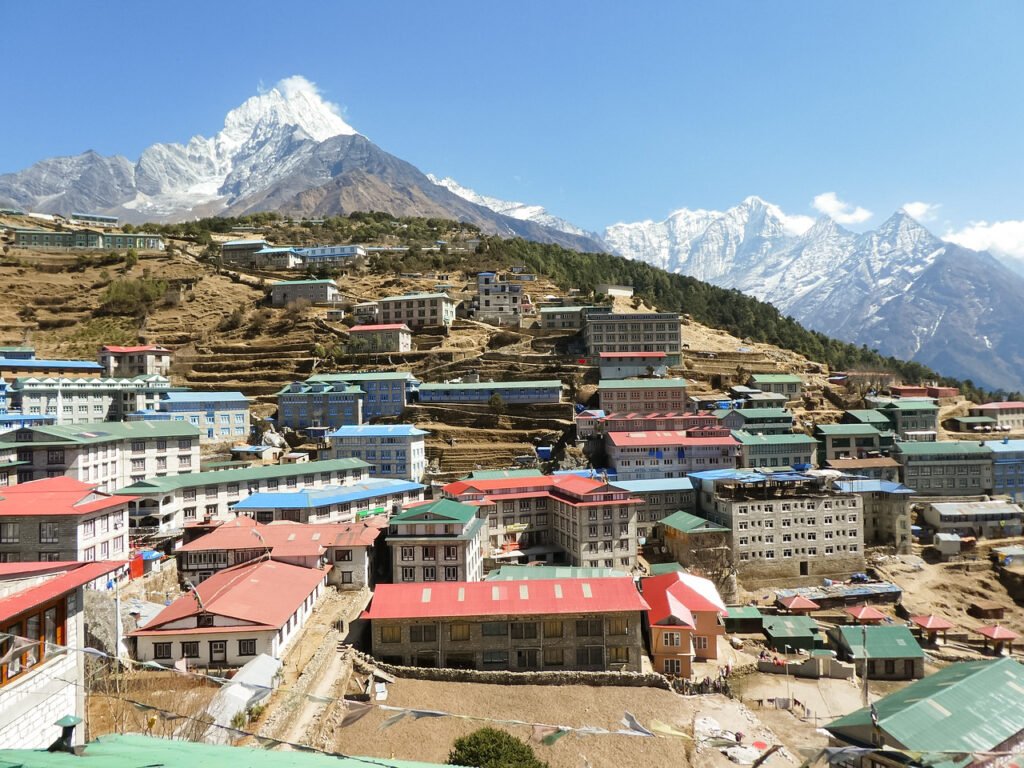
Autumn in Namche Bazaar stretches from September to November. It is the peak season and the best time to visit Namche Bazaar. During this time, the weather is the best in the year, with clear skies, long daytime, dry air and less humidity offering spectacular views of the snow-capped mountain peaks. The average temperature during this time is 6 to 7 degrees.
Spring is Namche Bazaar’s second peak season, starting in March and lasting until May. The average temperature during this time remains 7 to 8 degrees. Valleys full of rhododendron blossoms, a crispy clear sky, and excellent visibility make it another peak season and the best time to visit.
From June to August, it is Summer in Namche Bazaar. The temperature reaches 15 degrees during this time, and the rainfall is 30.8 mm. The sky remains cloudy almost all day, and the humidity is maximum. That’s why there are fewer this time, and Namche Bazaar remains silent.
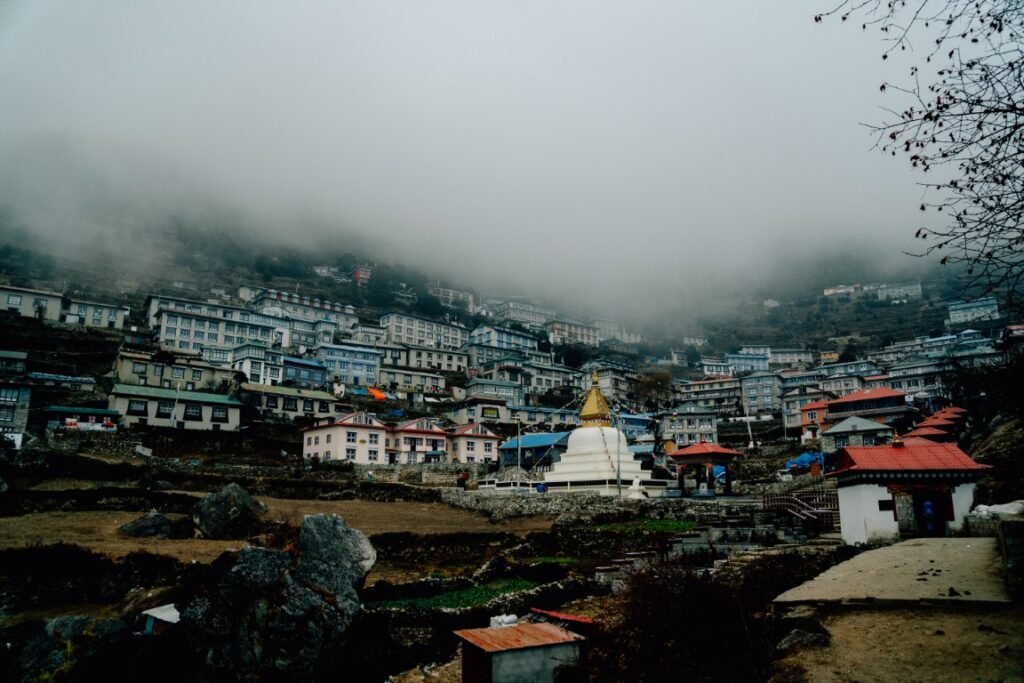
Winter in Namche Bazaar is from December to February and experiences heavy snowfall. The average temperature remains 1 to 2 degrees. Due to cold weather, snowfall, low visibility and a frozen source of water, Nance Bazaar has few trekkers.
FAQs on Namche Bazaar
1. Where is Namche Bazaar?
Namche Bazaar is a town in the Khumbu region of Nepal, at an altitude of 3,440 meters (11,286 feet). It is a popular stop on the way to Mount Everest Base Camp, serving as the gateway to the Everest region.
2. How do I get to Namche Bazaar?
The most common way to Namche Bazaar is by trekking from Lukla, which can be reached by a flight from Kathmandu. The trek to Namche Bazaar typically takes 2 days, passing through villages like Phakding and Monjo, and the altitude increases steadily.
3. What is the best time to visit Namche Bazaar?
The best time to visit Namche Bazaar is during the two trekking seasons:
- Spring (March to May): The weather is generally mild and clear, with blooming rhododendron forests.
- Autumn (September to November): This period offers clear skies and stable weather, which is ideal for trekking.
4. What is the altitude of Namche Bazaar, and do I need to worry about altitude sickness?
Namche Bazaar is 3,440 meters (11,286 feet) high. While this is not extremely high, it’s still important to acclimatize to avoid altitude sickness. It is recommended that you take a rest day in Namche to adjust before continuing further up toward Everest Base Camp.
5. What is there to do in Namche Bazaar?
- Acclimatization: Spend an extra day here to acclimatize.
- Hike to Everest Viewpoint: There’s a popular hike just above Namche to the Everest View Hotel, offering stunning views of Mount Everest, Lhotse, and Ama Dablam.
- Explore the local Market: Namche Bazaar is known for its bustling Market, where trekkers can buy gear, souvenirs, and snacks.
- Visit the Sherpa Museum: Learn about the history, culture, and mountaineering heritage of the Sherpa people.
6. Are there ATMs in Namche Bazaar?
Yes, there are three ATMs in Namche Bazaar. Still, carrying cash (Nepalese rupees) with you is advisable, especially if you’re travelling to remote areas, as ATM machines can be unreliable.
7. Can I buy trekking gear in Namche Bazaar?
Yes, Namche Bazaar has several shops selling trekking gear, from essential clothing to high-quality equipment. However, it is a good idea to buy your gear in Kathmandu before arriving, as options may be limited or overpriced in Namche.
8. What facilities are available in Namche Bazaar?
Namche Bazaar is relatively well-equipped for trekkers, with:
- Guesthouses and lodges offer food and accommodation.
- Restaurants and cafes serving local and international food.
- Medical clinics for basic health care.
- Wi-Fi and charging stations are available, though they can be expensive and slow.
Bakeries offering Western-style pastries and bread.
9. Is it safe to travel to Namche Bazaar?
Yes, Namche Bazaar is a popular and safe destination for trekkers. However, like any trekking area, it’s essential to be prepared. This includes:
- Getting the necessary permits (TIMS, Sagarmatha National Park Permit).
- Staying hydrated and properly acclimatizing to avoid altitude sickness.
- Be mindful of the weather, as conditions can change rapidly in the mountains.
10. How long does the trek from Lukla to Namche Bazaar take?
The trek from Lukla to Namche Bazaar typically takes 2 days:
- Day 1: Lukla to Phakding (3-4 hours).
- Day 2: Phakding to Namche Bazaar (5-7 hours), with a steady ascent.
11. What should I pack for a trip to Namche Bazaar?
Packing essentials include:
- Clothing for varying weather (layers, waterproof jacket, fleece).
- Comfortable trekking boots and socks.
- Personal medications and a first aid kit.
- Sunscreen, sunglasses, and a hat to protect from the sun.
- Water purification tablets or a filter.
- Power bank for charging devices.
- Cash (Nepalese rupees), as ATMs can be unreliable.
12. Can I use my credit card in Namche Bazaar?
While some guesthouses and shops in Namche Bazaar may accept credit cards, cash is more commonly used. Be prepared to pay in cash for most purchases and services.
13. What are the risks of trekking to Namche Bazaar?
Some risks include:
- Altitude sickness: Be aware of the symptoms and take adequate precautions, such as staying hydrated and taking rest days.
- Weather conditions: Weather can change quickly in the Himalayas, so always be prepared for rain, snow, or sudden temperature drops.
Injuries: Trekking involves a lot of physical exertion, so ensure you have proper footwear and be mindful of the terrain.
14. Is Namche Bazaar expensive?
Due to its remote location, Namche Bazaar can be more expensive than other parts of Nepal. Accommodation, food, and goods cost more here than in lower-altitude regions like Kathmandu. It’s recommended to budget accordingly.
15. What is the cultural significance of Namche Bazaar?
Namche Bazaar is a hub for the Sherpa people, known for their mountaineering skills. It’s an important cultural and economic centre in the Everest region, where trekkers can experience the unique Sherpa culture, language, and hospitality. The town also serves as a base for expeditions to Everest and other peaks.
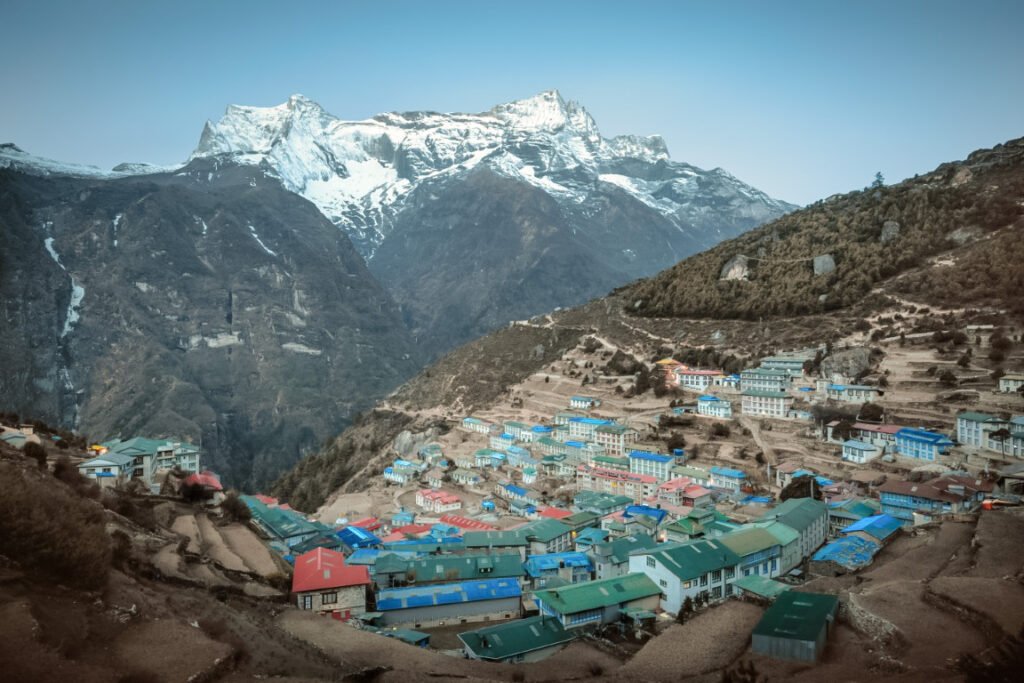
Conclusion
Namche Bazaar is not only the Gateway to Everest or an acclimatization stop for trekkers but also the region’s cultural, economic and social hub. It exhibits a unique blend of traditional Sherpa heritage and modern influences. It’s also a place to celebrate the successful completion of your dream trek in the Everest region. Before leaving Namche Bazaar, you must sit in an Irish Pub, have some beer and drinks, and share your stories with others.

